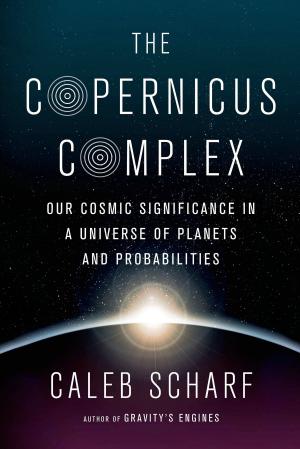A Unified Theory of Matter, Gravity and Electricity
Nonfiction, Science & Nature, Science, Earth Sciences, Geophysics, Physics, Astrophysics & Space Science| Author: | Victor W. Hatch | ISBN: | 9781311292971 |
| Publisher: | Victor W. Hatch | Publication: | June 30, 2016 |
| Imprint: | Smashwords Edition | Language: | English |
| Author: | Victor W. Hatch |
| ISBN: | 9781311292971 |
| Publisher: | Victor W. Hatch |
| Publication: | June 30, 2016 |
| Imprint: | Smashwords Edition |
| Language: | English |
This is the most significant breakthrough in over 100 years. Scientists, such as Einstein, Hawking and others have been seeking a “Grand Unified Theory, GUT” that would unify electromagnetic, gravity and other forces without success. Since the force of gravity is an electrical force their search is futile.
At the level of rocks, blocks, cars, trucks, trains, planes, houses and such we see only attractive forces. Similarly at the level of moons, suns, planets, solar systems and galaxies only attractive force is exhibited. This attraction holds satellites, moons, and planets in their orbits about the sun.
The Van der Waals force was invented to account for the attraction between gas molecules. Electronegativity was invented to account for an extra attraction between atoms in forming molecules.
The description of the bonding of molecules is based on the attraction of the nuclei of atoms being attracted to the electrons of the other atoms. At the same time the repulsion of the like charges of the nuclei are said to repel each other. Logically then the atoms would be repelled from each other. Logically this concept of the bonding of atoms is absurd.
Chemistry text books clearly state that over 99.9% of the mass of an atom is contained within the nucleus. From this it follows that there must be gravitational attraction between the nuclei of atoms. The nuclei of atoms are also positively charged. Ergo; gravity is the electrical attraction of positively charged particle to positively charged particle. The Van der Waals force is gravitational attraction. Atoms have an overall, residual positive charge. Electronegativity is an exhibition of this residual positive charge of atoms.
There is no repulsion between like charges there is only attraction between unlike charges. By definition “like charges” are charged in relation to the surrounding environment of unlike charges; they are attracted apart.
Part I presents the concepts and aspects of gravitation as an electrical force.
Part II, “The Genesis of Hurricanes and Tornadoes” presents how electrical/gravitational force is significant in meteorology and produces tornadoes, hurricanes and thunderstorms. Tornadoes produce a local reversal of gravitational force.
This is the most significant breakthrough in over 100 years. Scientists, such as Einstein, Hawking and others have been seeking a “Grand Unified Theory, GUT” that would unify electromagnetic, gravity and other forces without success. Since the force of gravity is an electrical force their search is futile.
At the level of rocks, blocks, cars, trucks, trains, planes, houses and such we see only attractive forces. Similarly at the level of moons, suns, planets, solar systems and galaxies only attractive force is exhibited. This attraction holds satellites, moons, and planets in their orbits about the sun.
The Van der Waals force was invented to account for the attraction between gas molecules. Electronegativity was invented to account for an extra attraction between atoms in forming molecules.
The description of the bonding of molecules is based on the attraction of the nuclei of atoms being attracted to the electrons of the other atoms. At the same time the repulsion of the like charges of the nuclei are said to repel each other. Logically then the atoms would be repelled from each other. Logically this concept of the bonding of atoms is absurd.
Chemistry text books clearly state that over 99.9% of the mass of an atom is contained within the nucleus. From this it follows that there must be gravitational attraction between the nuclei of atoms. The nuclei of atoms are also positively charged. Ergo; gravity is the electrical attraction of positively charged particle to positively charged particle. The Van der Waals force is gravitational attraction. Atoms have an overall, residual positive charge. Electronegativity is an exhibition of this residual positive charge of atoms.
There is no repulsion between like charges there is only attraction between unlike charges. By definition “like charges” are charged in relation to the surrounding environment of unlike charges; they are attracted apart.
Part I presents the concepts and aspects of gravitation as an electrical force.
Part II, “The Genesis of Hurricanes and Tornadoes” presents how electrical/gravitational force is significant in meteorology and produces tornadoes, hurricanes and thunderstorms. Tornadoes produce a local reversal of gravitational force.















